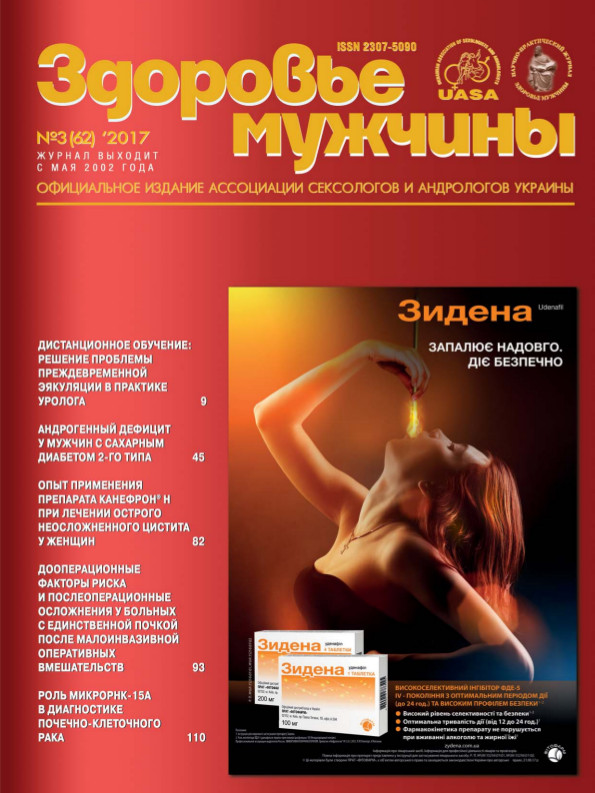Application of bioadaptive control in diagnostics of functional state of pelvis floor muscles during conservative treatment of overactive bladder
##plugins.themes.bootstrap3.article.main##
Abstract
Patients and methods. 73 women with symptoms of OAB were involved in the study. The EMG study of striated perineal muscles in 78.2 % of women with emergent form of urinary incontinence revealed pelvic sphincter apparatus dysfunction. In women with «sensory» symptoms of OAB without incontinence dysfunctions of muscles of the perineum and sphincter apparatus have been observed in 36,8% and 53,4% of the patients with algic syndrome.
Results. Also it have been found that during the application of the method of BFB in combination with ETS indicators of the sphincter muscle of the pelvic contributed in improvement of EMG indices in 52% of the patients in 2 weeks, in 61% of the patients after 4 weeks, and in 68% of the patients the progress in the muscle work by the 15th lesson has been recorded.
Conclusion. The study found that treatment by biofeedback combined with EMG-triggered electrical stimulation of the muscles of the pelvic floor functional disorders of the lower urinary tract HASM helps restore miktsiyi process control, allows you to create optimal physiological type maximum muscle contraction and regulation of conscious control the act of urination.
##plugins.themes.bootstrap3.article.details##

This work is licensed under a Creative Commons Attribution 4.0 International License.
Authors retain the copyright and grant the journal the first publication of original scientific articles under the Creative Commons Attribution 4.0 International License, which allows others to distribute work with acknowledgment of authorship and first publication in this journal.
References
Buckley BS, Lapitan MC, Epidemiology Committee of the Fourth International Consultation on Incontinence, Paris, 2008. Prevalence of urinary incontinence in men, women, and children-current evidence: findings of the Fourth International Consultation on Incontinence. Urology 2010; 76:265.
Management Recommendations. In: Incontinence, 4th ed., Abrams P, Cardozo L, Khoury S, Wein A. (Eds), Health Publications, Paris 2009. – Р. 1774.
Diagnosis and treatment of overactive bladder (non-neurogenic) in adults: AUA/SUFU Guideline / E.A. Gormley, D.J. Lightner, K.L. Burgio [et al.] // 2012 May. American Urological Association.
Tikkinen K.A. Does the Imprecise Definition of Overactive Bladder Serve Commercial Rather than Patient Interests / K.A. Tikkinen, A. Auvinen // Eur Urol. – 2012 Apr;61(4):746-8; discussion 749– 50. Epub 2012 Jan 5.
DuBeau CE. Treatment of urinary incontinence. In: UpToDate. Basow DS (Ed), UpToDate, Waltham, MA, 2012.
Benefits and harms of pharmacologic treatment for urinary incontinence in women: A systematic review. / T. Shamliyan, J.F. Wyman, R. Ramakrishnan [et al.] // Ann Intern Med. 2012 Jun 19;156(12):861–874.
EAU guidelines on urinary incontinence / J.A. Thüroff, P. Abrams, K.E. Andersson [et al.] // Eur. Urol. – 2011 Mar; 59(3):387–400.





